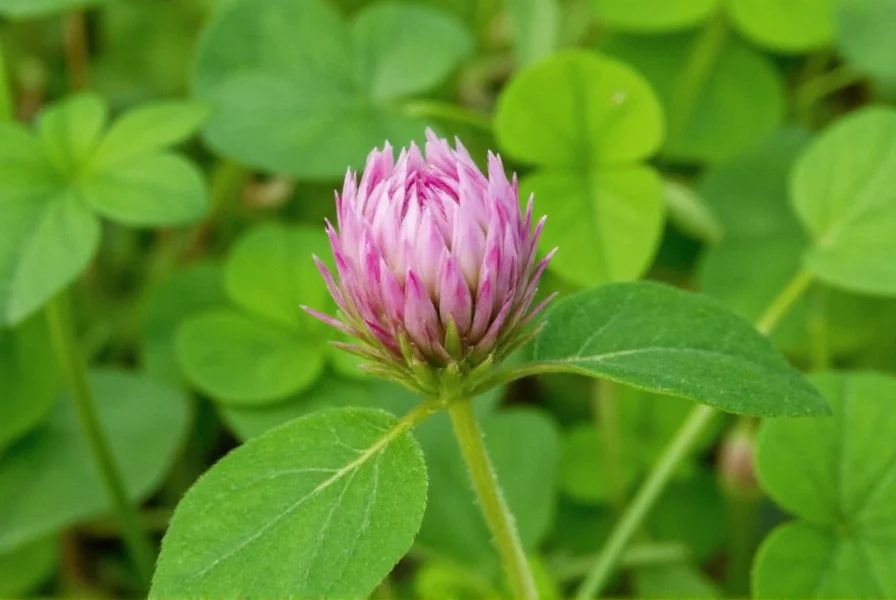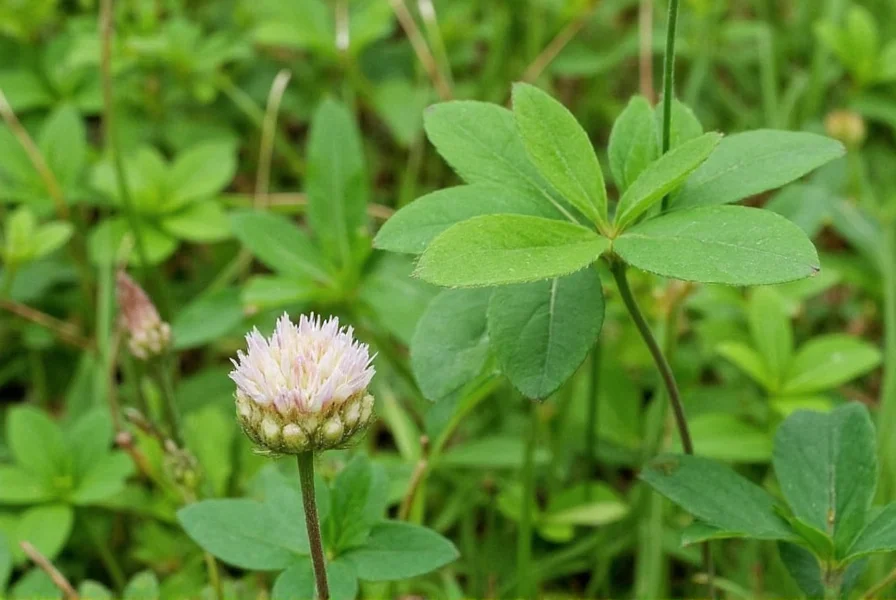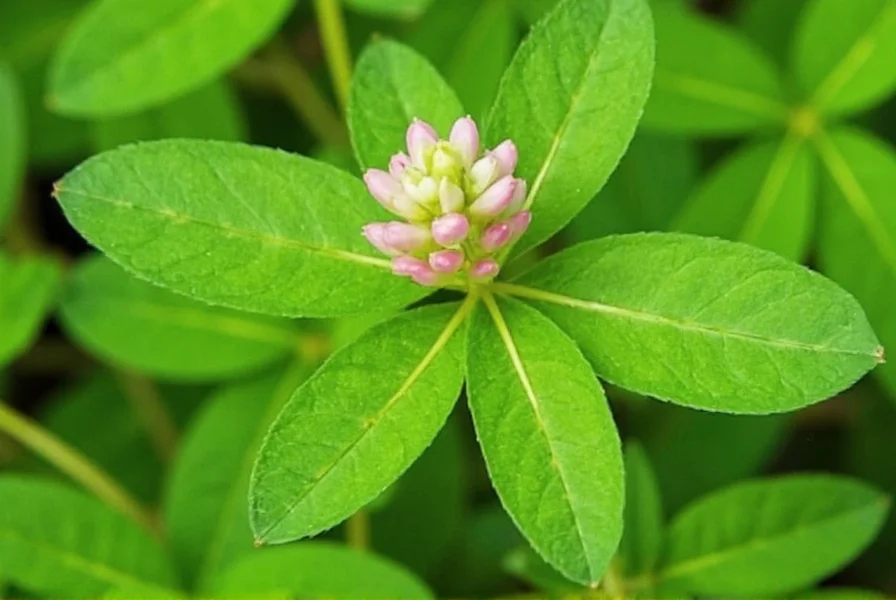Clover species, members of the Trifolium genus, represent one of the most ecologically significant plant groups across temperate regions. Understanding clover trifolium characteristics provides valuable insights for gardeners, farmers, and ecologists seeking sustainable land management solutions. These hardy perennials demonstrate remarkable adaptability to various soil conditions while improving soil fertility through their nitrogen-fixing capabilities.
Botanical Classification and Key Characteristics
The genus Trifolium belongs to the Fabaceae (legume) family, sharing characteristics with other nitrogen-fixing plants like beans and peas. Most clover species feature the distinctive trifoliate leaf arrangement that gives the genus its name. Each leaflet typically displays a lighter "V" marking, though this varies among species. Clover plants produce dense flower heads composed of numerous small florets, ranging in color from white and pink to vibrant red and yellow depending on the species.
One of the most remarkable features of clover trifolium plants is their symbiotic relationship with Rhizobium bacteria. These bacteria inhabit root nodules and convert atmospheric nitrogen into a form plants can use, effectively fertilizing the soil. This natural process makes clover an excellent cover crop and valuable component of crop rotation systems, reducing the need for synthetic fertilizers in sustainable agricultural practices.
Common Clover Species and Their Distinguishing Features
While white clover (Trifolium repens) and red clover (Trifolium pratense) represent the most widely recognized species, the Trifolium genus encompasses remarkable diversity. Understanding different clover species helps gardeners and farmers select appropriate varieties for specific purposes.
| Species | Height | Flower Color | Primary Uses |
|---|---|---|---|
| White Clover (Trifolium repens) | 4-8 inches | White to pink | Lawn component, pasture, erosion control |
| Red Clover (Trifolium pratense) | 12-24 inches | Purple-red | Forage crop, soil improvement, medicinal uses |
| Crimson Clover (Trifolium incarnatum) | 12-24 inches | Bright crimson | Cover crop, ornamental, wildlife habitat |
| Alsike Clover (Trifolium hybridum) | 12-24 inches | Pink to white | Hay production, pasture, honey production |
Ecological Importance of Clover Trifolium
Clover species serve as vital components of healthy ecosystems. Their nitrogen-fixing abilities improve soil fertility not only for themselves but for neighboring plants. This characteristic makes clover trifolium an excellent companion plant in polyculture systems and permaculture designs. Bees and other pollinators heavily rely on clover flowers as nectar sources, with white clover being particularly important for honey production.
From a soil health perspective, clover's extensive root system helps prevent erosion, improves soil structure, and increases organic matter content. When used as a cover crop, clover suppresses weeds through competition while adding valuable nutrients to the soil. Farmers practicing regenerative agriculture often incorporate various clover species into their crop rotation to maintain soil fertility without chemical inputs.

Historical and Cultural Significance
The relationship between humans and clover spans centuries. Ancient Celtic cultures considered the four-leaf clover a symbol of good fortune, while the three-leaf variety represented the Holy Trinity in early Christian symbolism. Farmers have utilized clover in crop rotation systems since the 18th century, recognizing its soil-enriching properties long before the science of nitrogen fixation was understood.
In traditional medicine, certain clover species have been used for various purposes. Red clover, for example, has a history of use in herbal remedies, though modern scientific evidence supporting these applications remains limited. The cultural significance of clover extends to national symbols, with the shamrock (typically white clover) serving as an enduring emblem of Ireland.
Practical Applications in Modern Agriculture and Gardening
Today, clover trifolium continues to demonstrate remarkable versatility across various applications. In agricultural settings, farmers plant clover as:
- A cover crop to prevent soil erosion and improve fertility
- A component of pasture mixes for livestock grazing
- A green manure crop to be tilled into the soil
- An alternative to traditional turf grass in low-maintenance lawns
Gardeners increasingly recognize the benefits of incorporating clover into their landscapes. White clover works well as a living mulch between garden rows, suppressing weeds while providing nitrogen to vegetable crops. Bee-friendly gardeners plant clover to support pollinator populations, and sustainable landscape designers use clover as an eco-friendly alternative to conventional lawns.
Identifying Clover Species: Key Characteristics to Observe
Accurate identification of clover trifolium species requires attention to several botanical features:
- Leaf characteristics: Note the shape, size, and markings on the leaflets. Some species display prominent pale crescents.
- Flower structure: Observe the color, shape, and arrangement of flowers. Clover flowers typically form dense spherical or oval heads.
- Stem features: Check whether stems are hairy or smooth, and whether they grow upright or creeping.
- Growth habit: Determine if the plant grows as a low ground cover or upright plant.
For those interested in wildflower identification, understanding these distinguishing features helps differentiate true clovers (Trifolium species) from similar-looking plants like oxalis (wood sorrel), which has heart-shaped leaflets and belongs to a different plant family.

Conclusion: The Enduring Value of Clover Trifolium
Clover plants, scientifically classified as Trifolium species, represent far more than simple weeds or ornamental plants. Their ecological benefits, agricultural value, and historical significance make them indispensable components of sustainable land management systems. Whether used as a cover crop to improve soil health, planted to support pollinator populations, or incorporated into low-maintenance landscapes, clover trifolium continues to demonstrate remarkable versatility and ecological importance. As interest in regenerative agriculture and sustainable gardening grows, the value of these nitrogen-fixing plants will likely increase, cementing their place as valuable allies in creating healthier ecosystems.
Frequently Asked Questions About Clover Trifolium
What is the scientific classification of clover?
Clover belongs to the genus Trifolium in the legume family Fabaceae. The genus contains approximately 250 species, with white clover (Trifolium repens) and red clover (Trifolium pratense) being the most widely recognized. The name Trifolium comes from Latin, meaning 'three leaves,' referring to the characteristic three-leaflet structure of most species.
How does clover improve soil fertility?
Clover improves soil fertility through a symbiotic relationship with Rhizobium bacteria that live in root nodules. These bacteria convert atmospheric nitrogen into a form plants can use, effectively fertilizing the soil. When clover plants die or are tilled into the soil, they release this stored nitrogen, making it available to subsequent crops without requiring synthetic fertilizers.
What's the difference between white clover and red clover?
White clover (Trifolium repens) typically grows 4-8 inches tall with creeping stems, white to pink flowers, and is commonly used in lawns and pastures. Red clover (Trifolium pratense) grows 12-24 inches tall with upright stems, purple-red flowers, and is primarily used as a forage crop and soil improver. White clover forms a low ground cover, while red clover grows more vertically and has larger flower heads.
Can clover be used as a lawn alternative?
Yes, white clover makes an excellent lawn alternative. It requires less mowing than traditional turf grass, tolerates foot traffic, stays green during dry periods, and naturally fertilizes the soil through nitrogen fixation. Clover lawns also support pollinators and require fewer inputs like water and fertilizer compared to conventional grass lawns, making them a sustainable landscaping option.
How do I identify different clover species?
To identify clover species, examine the leaf shape and markings, flower color and structure, stem characteristics, and growth habit. White clover has creeping stems and white flowers, red clover has upright stems and purple-red flowers, and alsike clover features pink flowers that turn white as they age. The presence and shape of the pale crescent marking on leaflets also helps distinguish between species.











 浙公网安备
33010002000092号
浙公网安备
33010002000092号 浙B2-20120091-4
浙B2-20120091-4